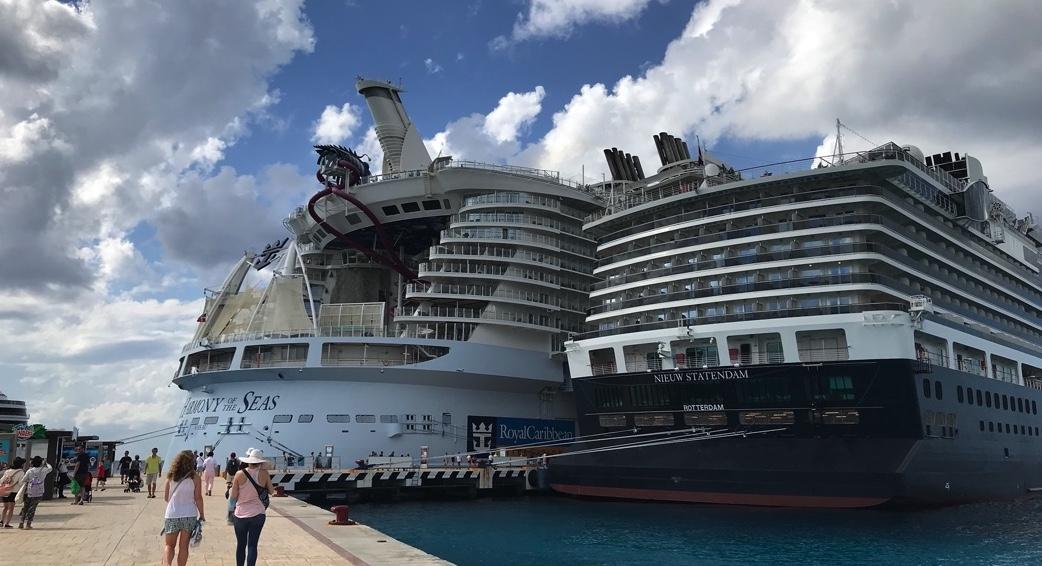Cruise passengers heading to Mexico starting July 1, 2025, will see a new charge added to their trip. A $5 per-person fee is being introduced by the Mexican government, with plans to gradually raise it to $21 over the next three years. The new fee follows years of debate and a sharp reduction from the original $42 proposal, which was met with strong resistance from cruise lines and tourism advocates.
At first glance, $5 may not seem like much. But the scale of cruise travel makes this a multimillion-dollar move.
Consider this: a single cruise ship can carry anywhere from 2,000 to 5,000 passengers. Cozumel, one of Mexico’s busiest cruise ports, receives about 63,000 cruise visitors in just one week — that’s more than $300,000 in new fees in seven days at one port alone. And Cozumel is just one of several popular cruise destinations in Mexico, including Costa Maya, Puerto Vallarta, Mazatlán, and Cabo San Lucas, all of which see ships docking nearly every day.
Multiply that across a full year and millions of passengers, and the revenue from this seemingly small fee becomes substantial.
Cruise Travelers Already Pay Port Fees—So What’s New?
As most cruisers know, the final fare already includes port charges. These existing fees vary by destination and are typically bundled into the upfront cost of a cruise. According to Cruise Nation, these fees are broken out by:
- Dockage fee: $0.393 per gross registered ton
- Head tax: $12.49 per guest (to cover local infrastructure usage)
- Port labor fees: Hourly rates determined by union agreements
The new $5 (and eventually $21) surcharge is in addition to these charges, which has led to frustration from cruise lines and tourism officials who argue that travelers are being double-taxed.
One of the most controversial aspects of the new surcharge is where the money will be spent. While one might assume the fee would support improvements to port infrastructure, tourism facilities, or local economic development, that’s not the case.
According to the Associated Press, most of the revenue from the fee will go to the Mexican military, not to ports or tourism-related projects. This allocation has sparked criticism from industry stakeholders who argue that the funds could be better used to enhance the traveler experience or support local communities that rely heavily on cruise tourism.
The Mexican Association of Shipping Agents has also spoken out against the decision—not because they oppose a fee entirely, but because they believe the reduced amount will hurt long-term planning and competitiveness. “If this measure is implemented,” the group said, “it would make Mexican ports of call among the most expensive in the world, severely affecting their competitiveness with other Caribbean destinations.”
The gradual increase to a $21 per-passenger surcharge could make Mexico one of the pricier cruise destinations in the Caribbean, where lines often choose between multiple nearby countries with lower associated costs. For cruise lines operating on tight margins and catering to budget-conscious travelers, even relatively minor fee differences can shift itineraries.
Previously, cruise passengers were exempt from Mexican immigration fees. The addition of this new charge—especially with most of the funds going to non-tourism sectors—has some questioning whether Mexico could see a dip in cruise calls in the coming years.
The Florida-Caribbean Cruise Association (FCCA), which represents the cruise industry in the region, ultimately agreed to the compromise to avoid the steeper $42 version, but has made it clear that cost increases like this come with trade-offs.
For now, passengers cruising to Mexico will see the $5 fee folded into their existing cruise fare or port taxes, which are often listed in the fine print of a booking confirmation. While it’s unlikely to make a dent in the cost of a vacation for most travelers, future increases to $14, then $21, may draw more attention—especially if cruise lines pass the costs along directly or start avoiding Mexican ports altogether.
More than 10 million cruise passengers are expected to visit Mexico in 2025. The new fee structure could generate significant income for the government—but at what cost to tourism? As cruise lines weigh their options and travelers compare destinations, how Mexico handles the revenue and the relationship with the industry will shape the outcome.


























